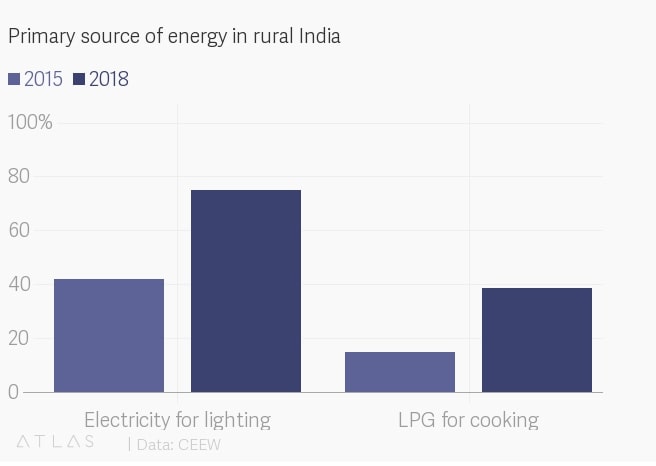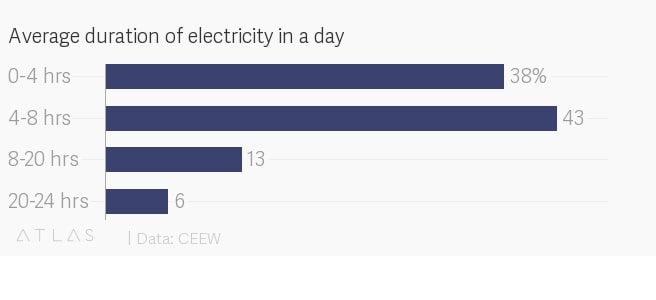Why in news?
Council on Energy, Environment and Water (CEEW) recently released a report on Indian villages’ access to energy.
What does the report say?
- The survey was conducted in six of the country’s major energy-deprived states - Uttar Pradesh, Bihar, Jharkhand, Madhya Pradesh, Odisha, and West Bengal.
- It has found a strong improvement in Indian villages’ access to energy.
- Towards Universal Electricity - Electricity through the national grid is now the main lighting source for 75% of India’s rural households.
- In 2015, when the last round of the survey was held, most of this population was burning kerosene oil for light.
- Cooking Fuel - In the past three years, the number of rural households using LPG as primary cooking fuel has also more than doubled to 39%.
- Thus they have shifted from firewood to LPG as cooking fuel and from kerosene oil to electricity for lighting.
- The increase in rural energy access shows at least a partial success of the Ujjwala and Saubhagya welfare schemes.
- Saubhagya aims to connect every rural household to the national power grid.
- Ujjwala provides low-income families with free LPG connections.

- However, the survey report highlights several bottlenecks in these missions.
What are the concerns?
- Affordability - Traditional biomass such as firewood is available almost for free, and hence is the primary cooking fuel for 61% of the rural households.
- However, Indoor pollution from such stoves leads to 4 million premature deaths every year in India.
- These people suffer from respiratory illness, cardiovascular disease, and cancer, as well as serious injuries from scalding, burns, and poisoning.
- Upfront Cost – Even after Ujjwala scheme, 42% of the rural households have not acquired an LPG connection.
- They cite the high costs involved, both in setting up the connection and the recurrent expenses incurred in refills.
- Lack of awareness or an implementation gap, wherein local authorities illegally charging households for installing connections could also be the reason.
- Gender factor – Apart from a volatile rural income, most rural women do not have a say in determining when a refill is ordered, even though the connection is in their name.
- Quality and reliability - Most electrified households cite frequent power cuts, voltage fluctuations, and blackouts as prominent concerns.

- Over 80% of the rural households don’t get more than eight hours of electricity a day on average.
- However, the poor grid infrastructure is unlikely to be fixed anytime soon, given the state-owned power distribution companies’ financial distress.
What should be done?
- People were unwilling to pay upfront Rs.900-1,000 for a 14 kg refill but would pay about Rs.300 for a refill, which is the price of refilling a 5 kg cylinder.
- The PMUY rules were thus amended to allow households to opt for two 5 kg cylinders instead of one 14 kg cylinder initially and shift to a 14 kg one after a few months.
- This will increase the household’s willingness to pay for the fuel and they will get habituated to the convenience of cooking with LPG in the long run.
Source: Business Line

